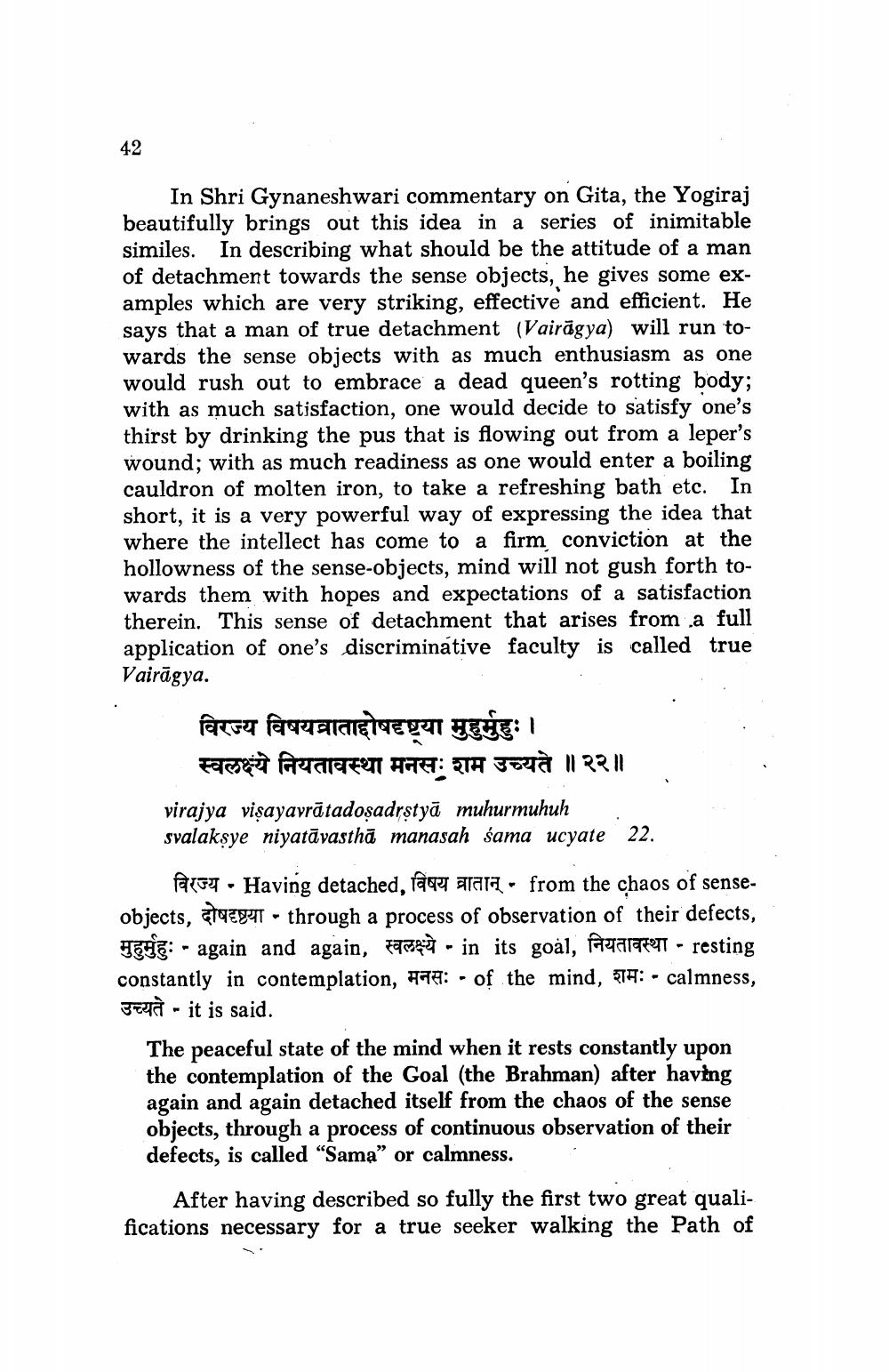________________
42
In Shri Gynaneshwari commentary on Gita, the Yogiraj beautifully brings out this idea in a series of inimitable similes. In describing what should be the attitude of a man of detachment towards the sense objects, he gives some examples which are very striking, effective and efficient. He says that a man of true detachment (Vairāgya) will run towards the sense objects with as much enthusiasm as one would rush out to embrace a dead queen's rotting body; with as much satisfaction, one would decide to satisfy one's thirst by drinking the pus that is flowing out from a leper's wound: with as much readiness as one would enter a boiling cauldron of molten iron, to take a refreshing bath etc. In short, it is a very powerful way of expressing the idea that where the intellect has come to a firm conviction at the hollowness of the sense-objects, mind will not gush forth towards them with hopes and expectations of a satisfaction therein. This sense of detachment that arises from a full application of one's discriminative faculty is called true Vairāgya.
विरज्य विषयव्रातादोषदृष्ट्या मुहुर्मुहुः।
स्वलक्ष्ये नियतावस्था मनसः शम उच्यते ॥२२॥ virajya vişayavrātadoșadrstyā muhurmuhuh svalaksye niyatāvasthā manasah sama ucyate
विरज्य • Having detached, विषय वातान् • from the chaos of senseobjects, TEB - through a process of observation of their defects, मुहुर्मुहुः - again and again, स्वलक्ष्ये - in its goal, नियतावस्था - resting constantly in contemplation, H97: - of the mind, TA: - calmness, gtyd - it is said.
The peaceful state of the mind when it rests constantly upon the contemplation of the Goal (the Brahman) after having again and again detached itself from the chaos of the sense objects, through a process of continuous observation of their defects, is called “Sama" or calmness.
After having described so fully the first two great qualifications necessary for a true seeker walking the Path of




